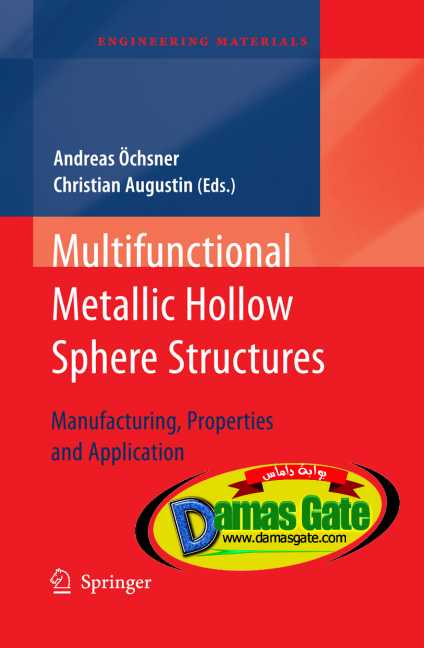Multifunctional Metallic Hollow Sphere Structures

Introduction
Andreas Ochsner and Christian Augustin 2
Technical University of Malaysia, Faculty of Mechanical Engineering,
81310 UTM Skudai, Johor, Malaysia and
The University of Newcastle, Callaghan, New South Wales 2308,
hollomet GmbH, Grunaer Weg 26, D-01277 Dresden, Germany and
University of Konstanz, Faculty of Humanities, Department of History,
D-78457 Konstanz, Germany
Nature frequently uses cellular and porous materials for creating load-carrying and
weight-optimized structures. Thanks to their cellular design, natural materials such as
wood, cork, bones, and honeycombs fulfill structural as well as functional demands. For
a long time, the development of artificial cellular materials has been aimed at utilizing
the outstanding properties of biological materials in technical applications. As an example,
the geometry of honeycombs was identically converted into aluminum structures
which have been used since the 1960s as cores of lightweight sandwich elements in the
aviation and space industries. Nowadays, in particular, foams made of polymeric materials
are widely used in all fields of technology. For example, Styrofoam
and hard
polyurethane foams are widely used as packaging materials. Other typical application
areas are the fields of heat and sound absorption. During the last few years, techniques
for foaming metals and metal alloys and for manufacturing novel metallic cellular structures
have been developed. Owing to their specific properties, these cellular materials
have considerable potential for applications in the future. The combination of specific
mechanical and physical properties distinguishes them from traditional dense metals,
and applications with multifunctional requirements are of special interest in the context
of such cellular metals. Their high stiffness, in conjunction with a very low specific
weight, and their high gas permeability combined with a high thermal conductivity
can be mentioned as examples. Cellular materials comprise a wide range of different
arrangements and forms of cell structures. Metallic foams are being investigated intensively,
and they can be produced with an open- or closed-cell structure, cf. Fig. 1.1.
Their main characteristic is their very low density. The most common foams are made
of aluminumalloys. Essential limiting factors for the utilization are unevenly distributed
material parameters and relatively high production costs.
Download
http://s18.alxa.net/s18/srvs2/02/001...Structures.rar